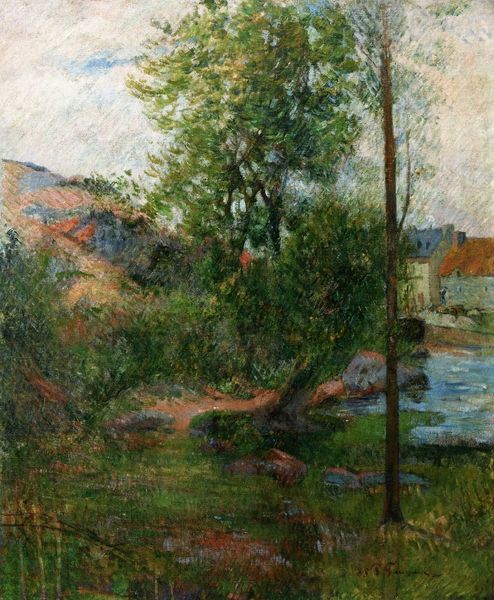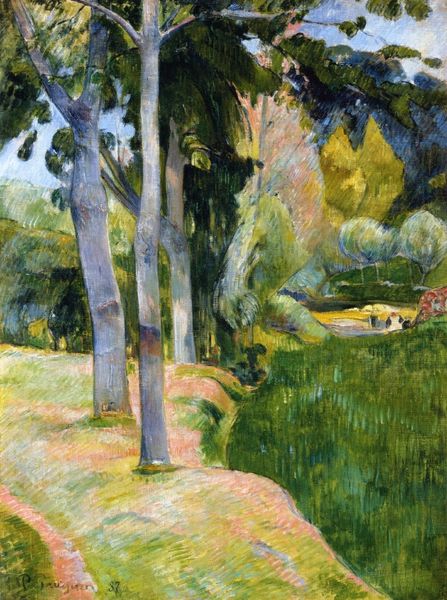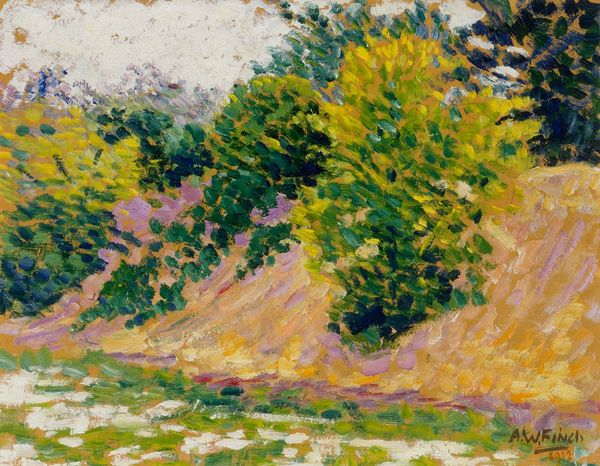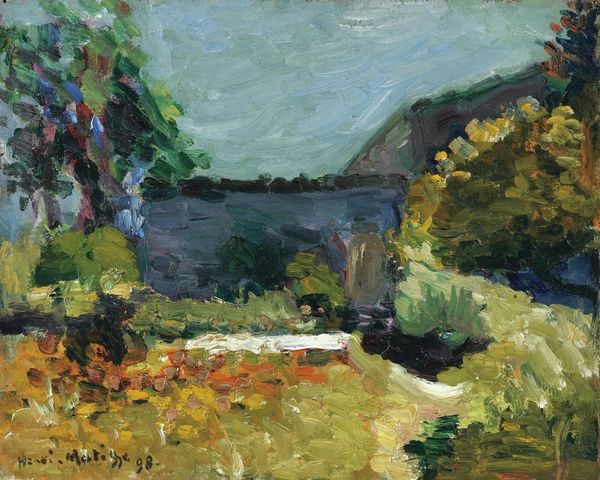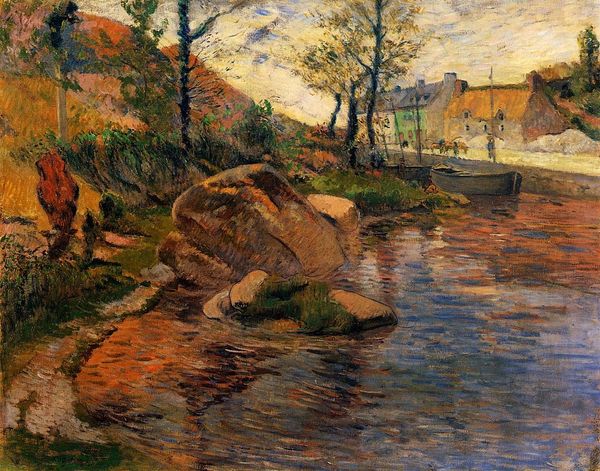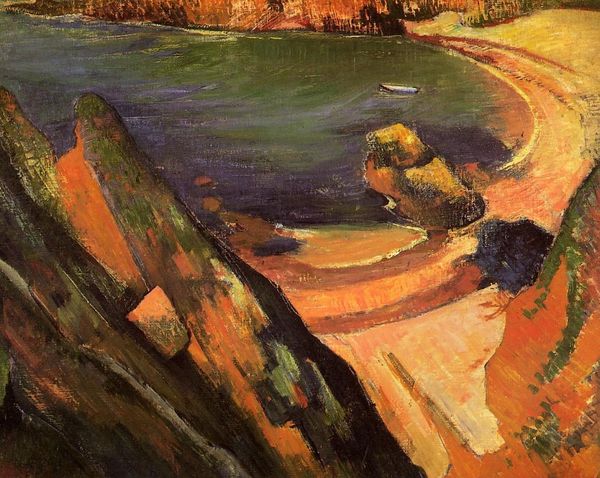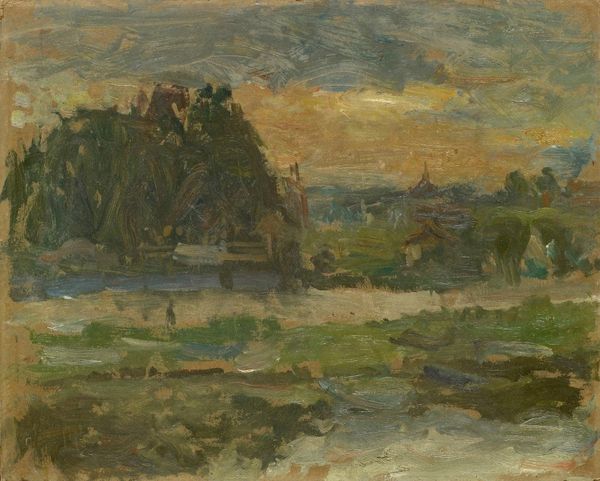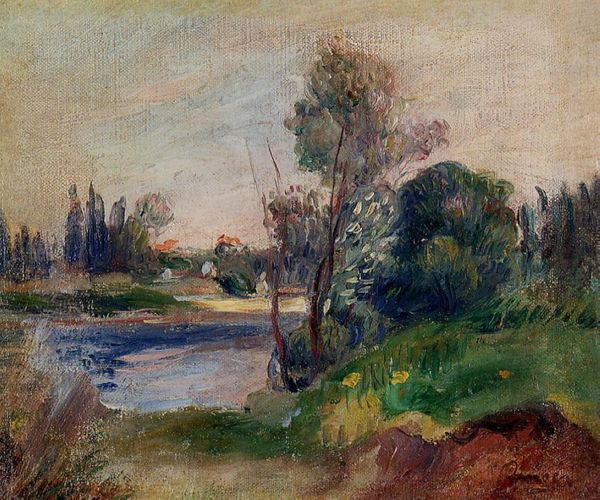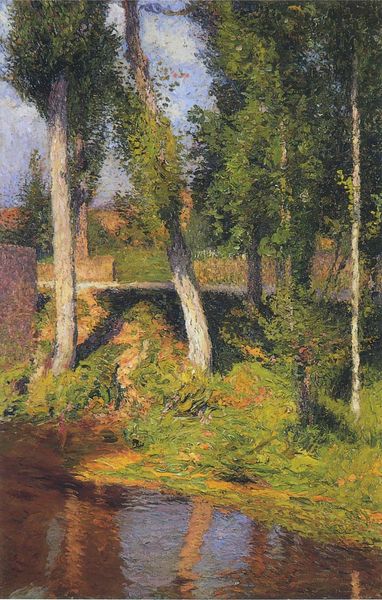
painting, plein-air, oil-paint
#
painting
#
impressionism
#
plein-air
#
oil-paint
#
landscape
#
figuration
#
symbolism
#
post-impressionism
Copyright: Public domain
Editor: Today we're looking at Paul Gauguin's "Fisherman and Bathers on the Aven," an oil painting from 1888. There's a definite stillness to it. The color palette is really warm, earthy even. What catches your eye when you look at this? Curator: Formally, the work presents a fascinating study in flattened perspective and non-naturalistic color. Note how Gauguin eschews traditional modeling, opting instead for areas of pure, unmodulated color. How do you respond to Gauguin’s composition, in the ways the trees, river, and figures, create a dynamic interplay? Editor: I noticed how the dark boat contrasts the vibrant yellows, almost grounding the work, preventing it from feeling completely detached. How would you decode its materiality, and brushstrokes in relation to Gauguin's Post-Impressionist style? Curator: Note the visible brushstrokes and impasto, particularly in the foreground foliage. These tactile qualities affirm the painting’s objecthood, reminding us of the artist's hand and the materiality of paint. Furthermore, one sees hints of the Symbolist movement in its non-realistic use of color. Editor: That's insightful. Initially I thought the color choice just served the overall impression of the piece. Now I see that Gauguin pushes boundaries with the style by juxtaposing warm hues. Curator: Precisely! These deviations from the natural world invite contemplation on the structural elements. The painting creates meaning through line, form, and color, encouraging the viewer to actively participate in constructing meaning. Editor: Thank you! It gives me an enriched and comprehensive understanding. Curator: Indeed. Visual examination opens new insights and ways of engaging with form, beyond what might be expected.
Comments
No comments
Be the first to comment and join the conversation on the ultimate creative platform.
